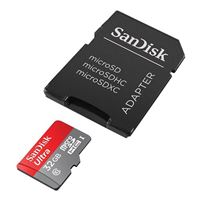TSMC Readies Subsequent-Gen HBM4 Base Dies, Constructed on 12nm and 5nm Nodes
Of the quite a few principal changes coming with HBM4 memory, one of many very important prompt is the sheer width of the memory interface. With the fourth-generation memory customary transferring from an already enormous 1024-bit interface to a ultra-wide 2048-bit interface, HBM4 memory stacks is not going to be enterprise as extraordinary; chip producers are going to want to undertake further superior packaging methods than are used as we converse to accommodate the broader memory.
As part of its European Experience Symposium 2024 presentation, TSMC equipped some up to date particulars into the underside dies it will be manufacturing for HBM4, which might be constructed using logic processes. With TSMC planning to utilize variations of their N12 and N5 processes for this job, the company is anticipating to occupy a great place throughout the HBM4 manufacturing course of, as memory fabs shouldn’t presently outfitted to economically produce such superior logic dies – if they may produce them the least bit.
For the first wave of HBM4, TSMC is making able to make use of two fabrication processes: N12FFC+ and N5. Whereas they serve the equivalent purpose — integrating HBM4E memory with next-generation AI and HPC processors — they’ll be utilized in two alternative routes to connect memory for high-performance processors for AI and HPC functions.
“We’re working with key HBM memory companions (Micron, Samsung, SK Hynix) over superior nodes for HBM4 full stack integration,” talked about Senior Director of Design and Experience Platform at TSMC. “N12FFC+ worth environment friendly base die can attain HBM for effectivity and N5 base die can current way more logic with rather a lot lower power at HBM4 speeds.”
| TSMC Logic for HBM4 Base Die | ||||
| N12FFC+ | N5 | |||
| Area | 1X | 0.39X | ||
| Logic GHz @ power | 1X | 1.55X | ||
| Power @ GHz | 1X | 0.35X | ||
TSMC’s base die made on N12FFC+ fabrication course of (12nm FinFet Compact Plus, which formally belongs to a 12nm-class experience, nonetheless it lays its roots from TSMC’s well-proven 16nm FinFET manufacturing node) can be utilized to place in HBM4 memory stacks on a silicon interposer subsequent to system-on-chips (SoCs). TSMC believes that their 12FFC+ course of is well-suited to realize HBM4 effectivity, enabling memory distributors to assemble 12-Hi there(48 GB) and 16-Hi there stacks (64 GB), with per-stack bandwidth successfully as over 2 TB/second.
“We’re moreover optimizing CoWoS-L and CoWoS-R for HBM4,” the Senior Director talked about. “Every CoWoS-L and CoWoS-R [use] over eight layers to permit HBM4’s routing of over 2,000 interconnects with [proper] signal integrity.”
HBM4 base dies on N12FFC+ might be instrumental in establishing system-in-packages (SiPs) using TSMC’s CoWoS-L or CoWoS-R superior packaging experience, which offer interposers as a lot as 8x reticle measurement – adequate space for as a lot as 12 HBM4 memory stacks. At present, HBM4 can receive data change costs of 6 GT/s at currents of 14mA, in keeping with TSMC figures.
“We collaborate with EDA companions like Cadence, Synopsys, and Ansys to certify HBM4 channel signal integrity, IR/EM, and thermal accuracy,” the TSMC marketing consultant outlined.
Within the meantime, as an way more superior numerous, memory producers could even have the selection of tapping TSMC’s N5 course of for his or her HBM4 base dies. N5-built base dies will pack way more logic, eat a lot much less power, and might present even larger effectivity. Nonetheless arguably essential revenue is that such an advanced course of experience will permit are very small interconnect pitches, on the order of 6 to 9 microns. This could allow N5 base dies to be used together with direct bonding, enabling HBM4 to be 3D stacked correct on excessive of logic chips. Direct bonding stands to allow for even bigger memory effectivity, which is predicted to be an enormous improve for AI and HPC chips that are always scrounging for further memory bandwidth.
We already know that TSMC and SK Hynix collaborate on HBM4 base dies. It is seemingly that TSMC could even produce HBM4 base dies for Micron. In some other case, we is likely to be further surprised to see TSMC working with Samsung, as that conglomerate already has its private superior logic fabs by means of its Samsung Foundry unit.





